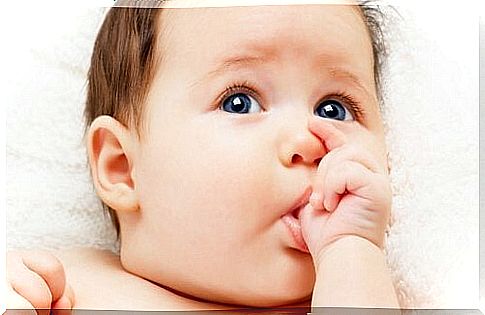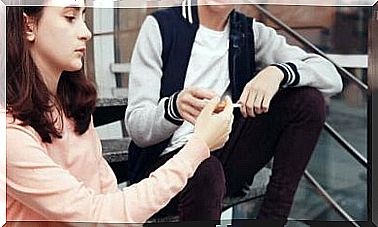The Sucking Reflex In Newborns – Being Parents

It is a primitive instinct found in all mammals, and humans are no exception.
The sucking reflex in newborns occurs involuntarily. So, if the baby is not doing it properly, it can be a sign of an abnormality in the baby’s development.
If you are or will be a mom and are going to breastfeed, you can find all the information you are looking for on the sucking reflex in this article.
What is the sucking reflex?
At birth, babies already have basic instincts that allow them to survive. Although they have their parents’ attention, innate and involuntary abilities like the sucking reflex are essential for breastfeeding.
The sucking reflex is practiced by the baby already before its birth in the womb. Thus, it can be detected with an ultrasound from the fourth month of pregnancy.
Indeed, we can identify it because during this period, the baby begins to suck his thumb. Although, to a large extent, amniotic fluid is also an important element for the consolidation of this reflex, since it is a process that must go hand in hand with the swallowing reflex.
This process should not be confused with a classic conditioning class. In fact, sucking and swallowing reflexes are so archaic that they are etched into the genes of human babies as well as those of all mammals.
It is a practice that allows the baby to adjust the correct coordination so that the two reflexes complement each other. That is, at birth, the baby must show the sucking reflex in combination with the swallowing reflex. This is what will allow her to suck and swallow the milk properly.

It is a temporary reflex
The sucking reflex does not need the mother’s breast to manifest itself, it suffices to bring your finger to the baby’s mouth for it to respond to the stimulus and have this sucking reflex.
The sucking reflex usually goes away between six and nine months. However, this does not mean that this is the normal age for stopping breastfeeding or that her sucking ability has disappeared.
What actually happens during this time is that babies become aware of the execution of their movements. Consequently, they perform the act of sucking no longer as a reflex, but voluntarily. Thus, before being one year old, the baby may refuse to latch on to the breast or bottle if he is not hungry.
The different types of sucking in babies
There are two forms of classification of the sucking reflex, one of the direct point of view of the sucking of the baby and the other of the effect this reflex has on the mother.
These two classifications have two subtypes, mature and immature sucking, and correct and incorrect sucking respectively for each class. Each is explained below:
Mature sucking
The sucking reflex in babies can be defined as mature if, during breastfeeding, the baby sucks 10 to 30 times without stopping.
This means that the baby coordinates sucking, swallowing and breathing effortlessly, managing to do all three effortlessly to feed from the mother’s breast.
Immature sucking
It is the one in which there is a difficulty or a lack in the execution of this reflex. This can be deduced when the baby sucks 3-4 and then stops, either to rest or to breathe.
Immature sucking can be a sign of poor coordination between the stimuli necessary for breastfeeding. When the baby seems to be trying too hard to suck on breast milk and it does not, there may be a problem such as the presence of a short-tongue frenulum.
The correct sucking
The correct sucking reflex occurs when it is done in a fluid and natural manner, in that it should not cause harm or discomfort to the mother’s breast.
It is related to mature sucking, and while it is common for mature sucking to occur without damaging the mother’s breast, it is not always straightforward.

Incorrect sucking
It is when the baby causes pain or damage to the mother’s breast. This can range from pain to infection of the nipples. This may be a sign of a short-tongue frenulum if the child is trying hard to suck and is not gaining weight.
It should be noted that this is not necessarily a pathological problem, as early use of bottles or pacifiers can lead to immature or incorrect sucking. Indeed, this causes an absence of habituation of the baby to the shape of the mother’s breast.
The other goals of the sucking reflex
The sucking process not only serves to breastfeed the baby without problems, it is also a stimulus on both sides. On the one hand, the mother’s breast automatically stimulates the baby’s lips to start feeding him. In addition, the sucking reflex is a stimulus for the production of milk.
On the other hand, the sucking reflex is also a reassuring measure for the baby, more because of the mother’s need for safety in contact than because of the feeding itself. It is therefore not uncommon for babies to be more comfortable sleeping near their mother’s breast, even if they are not breastfeeding.









